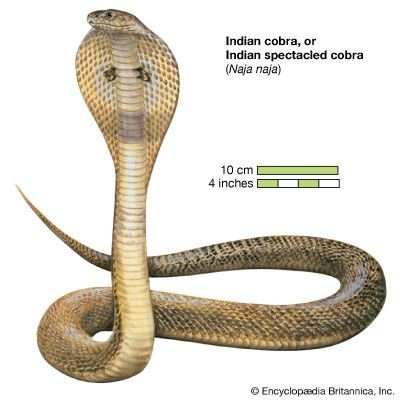
Understanding the Indian cobra’s evolutionary journey is like tracing a family tree, where each branch tells a story of survival, adaptation, and change. As we dive into its past, we’ll explore the origins of the species, its place in the animal kingdom, and how it has adapted to thrive in various habitats across India. So grab a cup of coffee, and let’s take a leisurely stroll through the history of this captivating reptile.
The Origins of the Indian Cobra
The Indian cobra, scientifically known as *Naja naja*, belongs to the family Elapidae, which includes some of the most venomous snakes on the planet. Its evolutionary journey dates back to the early *Cenozoic Era*, roughly 60 million years ago. During this time, snakes began to diversify and adapt to various environments. The Indian cobra’s ancestors slithered alongside dinosaurs, but as the world changed, so did these reptiles, allowing them to thrive in their new niches.
You might be wondering what makes the Indian cobra different from its relatives. This species has distinct physical features, such as the famous hood, which it can expand when threatened. The evolution of this hood is a fascinating example of how species adapt defensive mechanisms. It’s not just for show—this dramatic display signals to potential predators that the cobra is venomous and ready to defend itself.
How Genus and Species Differ
The Indian cobra is part of the *Naja* genus, which contains other cobras as well, like the Egyptian cobra and the spitting cobra. While many snakes simply rely on camouflage for protection, cobras employ both their appearance and venom to deter threats. This dual strategy has helped shape their evolution and survival across varying habitats.
Notably, the Indian cobra’s venom is highly neurotoxic, causing paralysis and potentially death in its prey and threats. This potent venom is a result of millions of years of evolution, allowing the cobra to hunt and defend itself in a variety of ecosystems—from forests to urban areas—where it thrives today.
Adaptations to Environment
Adaptations are nature’s way of ensuring survival, and the Indian cobra is a prime example of this. These snakes have developed unique traits that help them thrive in diverse environments across India. From arid regions to lush greenery, you can find them in a multitude of habitats, thanks to their incredible adaptability.
One major adaptation is their ability to regulate body temperature. Like all reptiles, cobras are ectothermic, meaning they rely on external heat sources. This means you’ll often see them basking in the sun during the day, absorbing warmth, and becoming less active at night. This behavioral adaptation allows them to conserve energy while hunting or escaping from predators.
Diet and Hunting Strategies
Another fascinating aspect of the Indian cobra’s evolution is its diet. Predominantly carnivorous, they feast on small mammals, birds, and even other reptiles. Their hunting strategy is a testament to their evolutionary success. With swift strikes and impressive agility, these snakes can catch prey before it even knows what’s happening.
The Indian cobra has also evolved excellent vision and a keen sense of smell, which help it locate food. They use their forked tongues to pick up scent particles, giving them a better idea of their surroundings. This sensory adaptation is crucial for hunting and avoiding danger in their often-dense habitats.
Role in Culture and Mythology
The Indian cobra isn’t just a creature of the wild; it’s deeply ingrained in Indian culture and mythology. In various folklore, these snakes are portrayed as symbols of power and protection. For example, the image of a cobra is often found in art, representing divinity and authority. Take the Hindu god Shiva, who is often depicted with cobras coiled around his neck, symbolizing power and control over fear.
This cultural significance has also impacted how people view and interact with cobras. Remember that mesmerizing scene with the snake charmer? That ritual dates back centuries, where cobras are seen as both fascinating creatures and important cultural icons.
Conservation and Threats
Sadly, despite their cultural significance, Indian cobras face several threats today. Habitat loss due to urbanization, deforestation, and agriculture threatens their survival. Additionally, the illegal wildlife trade puts countless snakes at risk, as they are often captured for their skin or as exotic pets.
Conservation efforts are crucial to ensuring that these magnificent creatures remain part of our ecosystem. Awareness campaigns and local education initiatives are steps in the right direction, encouraging people to respect and protect these snakes rather than fear them.
The Future of the Indian Cobra
Looking ahead, the future of the Indian cobra hinges on our actions today. With increasing awareness about the importance of biodiversity and the roles snakes play in ecosystems, there’s hope for this remarkable species. By respecting their habitats and understanding their place in nature, we can help ensure that future generations will also marvel at the Indian cobra.
The evolution of the Indian cobra is a story of resilience, adaptation, and coexistence. As we learn more about these creatures, it becomes apparent that they are not just objects of fear but vital members of our natural world. By preserving their habitats and promoting education, we can help secure a future where the Indian cobra continues to thrive.
In conclusion, the Indian cobra is more than just a venomous snake; it’s a remarkable survivor with a rich evolutionary history. From ancient origins to modern-day adaptations, this creature continues to fascinate and educate us. Let’s work together to appreciate and protect the legacy of the Indian cobra for years to come.
